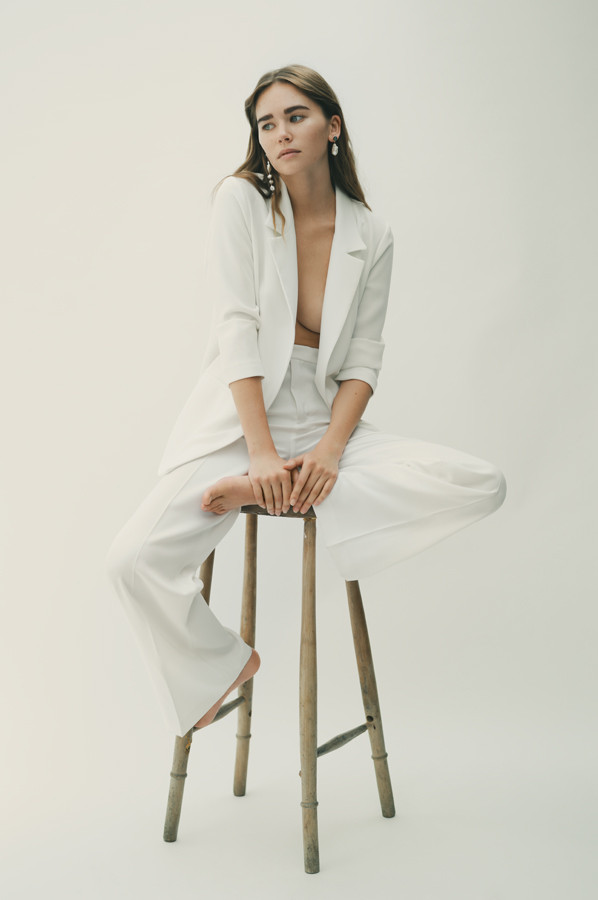
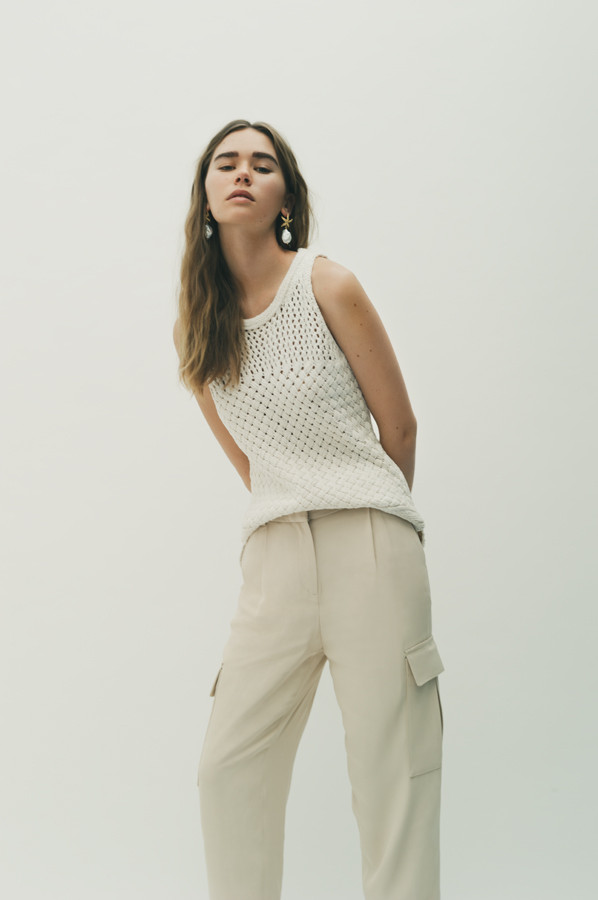
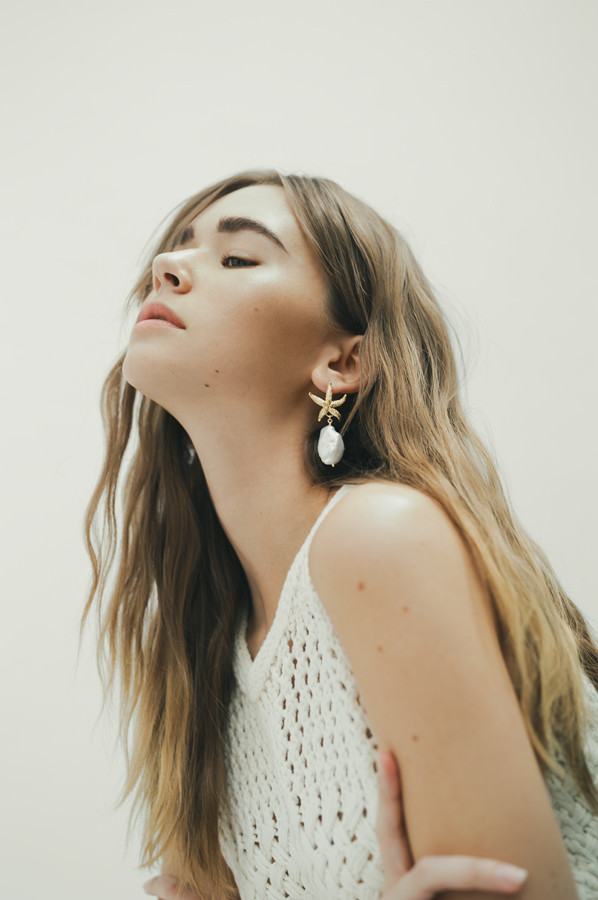
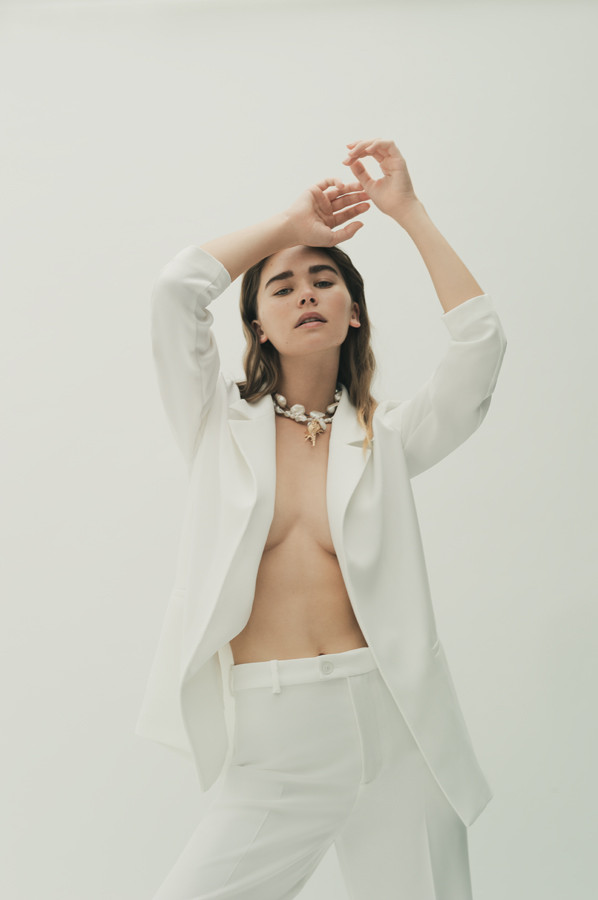
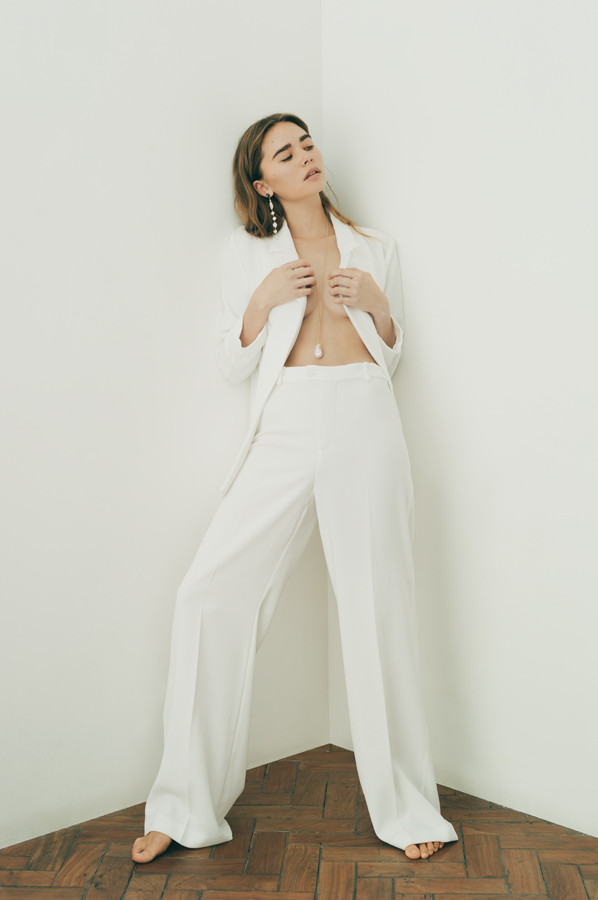
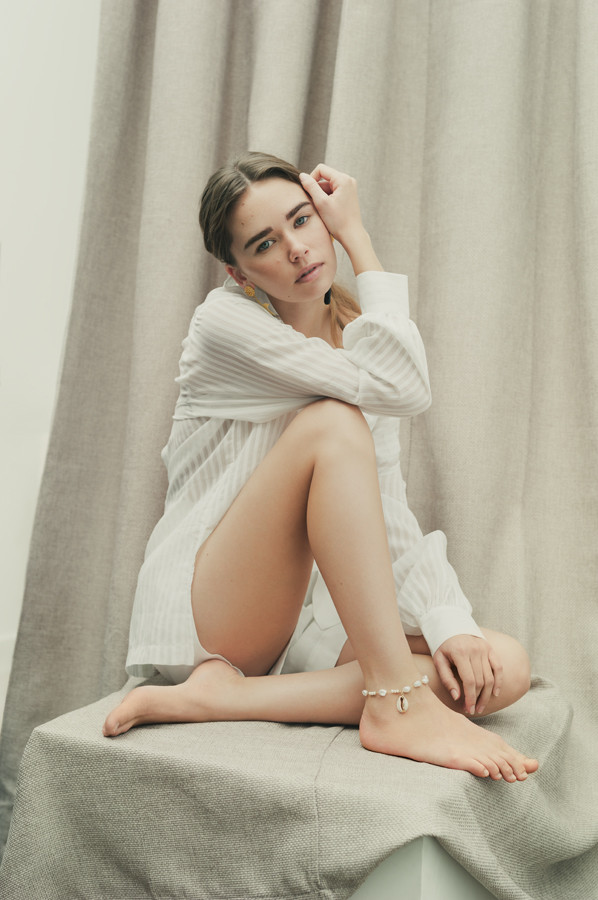
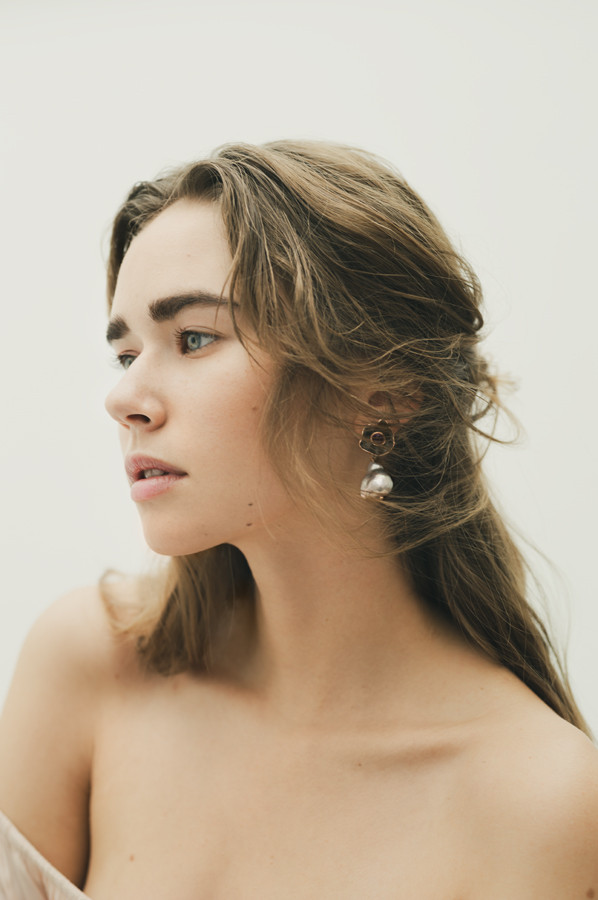
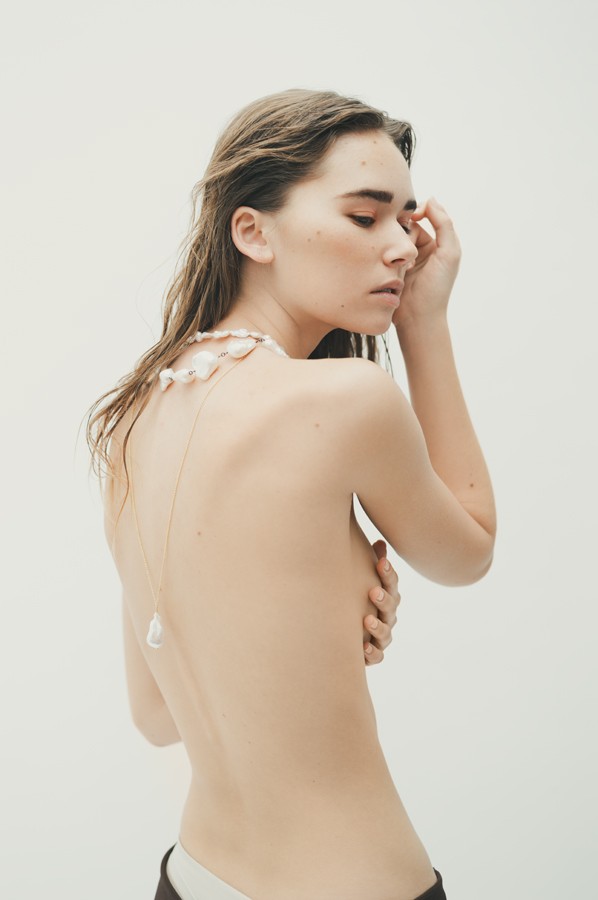
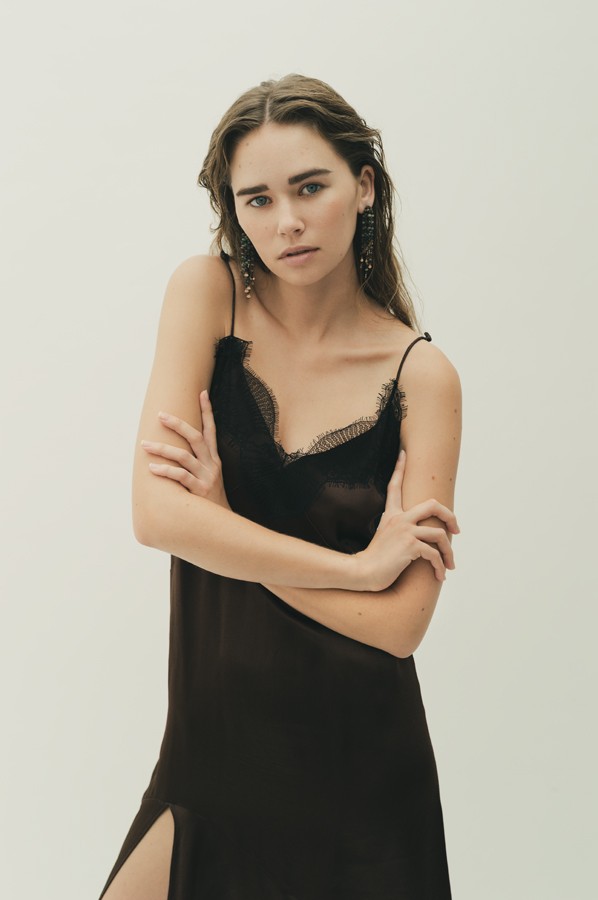









INTERVIEW
Rob Oades
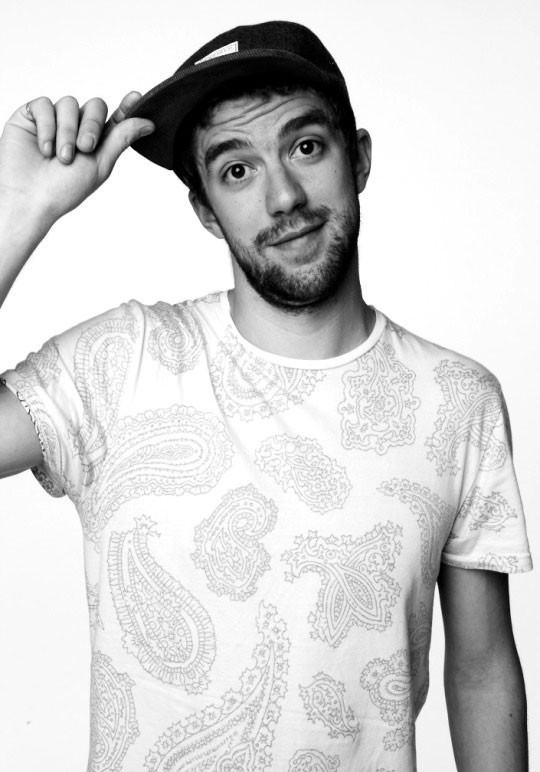
Photography: Rob Oades Model: Gabriella Brooks (Storm Models) Stylist: Aiste Suliokaite Hair & Makeup: Michela Olivieri Jewellery: Sofia Buccarello Camera: Leica S (Typ 007) with Summarit-S 70 f/2.5 ASPH. (CS) and APO-Macro-Summarit-S 120 f/2.5 (CS)
With his Leica S2, the British fashion photographer captured a jewellery collection whose starfish, shell and pearl designs conjure up a maritime feel. After a long search for a model that could truly embody the sea, he shot the series in a London studio in summer 2019.
Here he talks about the art forms that inspire him, how he develops his ideas, and why the perfect light plays such a crucial role in his work.
This series features accessories with a subtly maritime feel, such as jewellery in the shape of shells, starfish and pearls. What is the story behind these pieces, and what was your concept for the shoot?
My good friend and stylist Aiste approached me and asked if I wanted to shoot something for her friend, Sofia Buccarello – a jewellery designer who crafts all of her pieces herself. Her work is really beautiful. With the focus being on the jewellery, I wanted to keep it simple. Using the concept of the sea and sandy tones in styling, I just knew that daylight was the only option for this shoot. I needed a model that embodied the sea, someone who understands and respects it. Gabby nailed the brief. It's all the little things that add up.
So was this a commissioned project or an independent shoot?
It was something in between. I had just completed a series of commercial gigs and was keen to do a creative shoot. So when Aiste came up with the suggestion, I jumped at the chance. It was essentially an assignment that didn't exist until I was on board. Myself and Aiste actually approached the client – which is not something that normally happens.
How do you develop the concepts for your personal and commissioned projects?
You have to start somewhere, and that point is different every time. It could be the brief that came with the commission, or the cool guy you sat next to on the train. At the moment I’m inspired by places and landscapes – probably because I’m a Yorkshire lad living in Texas. I’ll see a landscape, and I get this urge to fill it with something. So I’ll go home and do studies. I still use sketchbooks and notebooks. I have notebooks full of quotes or random words and pictures. I have a library of books on photographers, artists and magazines from the 1930s to the present day. I much prefer this to the internet. Personally, I feel that the internet kills more ideas than it creates.
Many photographers draw inspiration from other forms of art. Are there any specific artists whose work you admire?
I visit art galleries and museums as much as I can. I’ve always been fascinated by the human form, be it male or female. Leonardo da Vinci and Michelangelo are perhaps my ultimate favourites. What I find especially interesting is the struggle between science and religion that characterised the time period in which they lived. They also established a definition of beauty that has endured to this day. The Mona Lisa and the statue of David, I believe, are the pinnacles of art and beauty.
Who had an influence on how you developed your own way of seeing?
When I was assisting, I only ever worked for people who inspired me. Being an assistant is hard, so I reserved my dedication for photographers I really admired. I love movies. It’s not just the story-telling but, most of all, the aesthetics and colours that intrigue me. Wes Anderson is an incredible artist, his style definitely inspires me. I’m a great proponent of symmetry. Another extraordinary director is Tarsem Singh, whose film ‘The Fall’ is my all-time favourite movie. It's a must-watch. When a story and a director’s vision culminate in something like that movie, it’s breathtaking.
What role does light play in your work, and which lighting techniques do you favour?
I’m a great believer in natural beauty, and that also goes for light. The effect of natural light is less harsh. You can compensate for movement and ambient changes by adjusting your shutter speed and aperture, or you might want to bounce the light to highlight certain areas over others. Paolo Roversi is a master at this. Light is my paint. If you don't know how to use it emotively then your art won’t connect with anyone. We shot this story in mid-July 2019, so there was a nice, high sun throughout the day. Being able to harness and shape that harsh sunlight was a major element of this shoot.
Do you usually work with natural light, or are there times when you rely on flash photography?
Ever since my assisting days, I’ve loved playing with light. I’d much rather take the time to light my subject during the shoot instead of fixing it in post-processing – even if that means having less time to actually shoot the pictures. Natural light is always preferable. In fact, emulating natural light is all photographers ever try to do. If there is a viable opportunity to shoot in daylight I’ll always take it. Given the weather in the UK, this doesn’t happen all that often though.
I do frequently work with flash, and I appreciate both the level of control it gives you and the crisp feel of the images. Being in complete control in a studio environment is something I definitely relish. Having said that, it takes a lot of practice to really master flash photography. I love mixing the two, and then watching people guess how a certain scene was lit. The secret always stays between me and my notebooks.
What equipment did you use to shoot this series?
I worked with the Leica S2, my one and only camera, combined with the Summarit 70mm and 120mm.
What did you especially like about this combination, and why did you choose these particular lenses?
I love my S2, it embodies everything I most value: aesthetics, simplicity and practicality. Many of today’s digital cameras look more like fighter jets than cameras. All you really need is shutter speed, aperture, ISO and release. Anything more complicated than that becomes a distraction that interferes with the creative process. Your camera should feel like it’s a part of you. I chose the 70 and 120 mm lenses for their portrait quality and sharpness. In many ways, you buy a Leica for the lenses, which are absolutely unparalleled.
How do you imagine your visual language might change over time?
Photography and fashion have a habit of repeating themselves. I think it’s all about keeping up with what's coming back around whilst also maintaining a style that is your own. If I continue to focus on the defining characteristics of my work, I should always be on the right track.